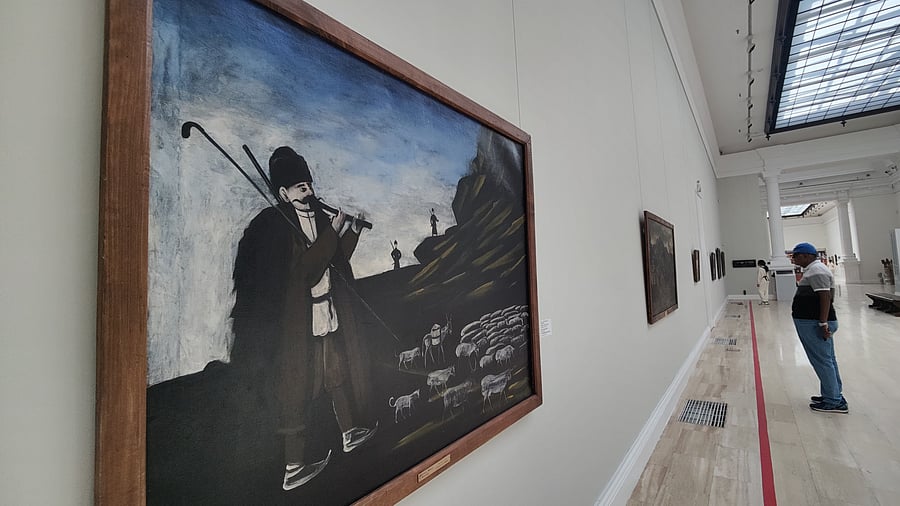
One of Pirosmani's paintings.
Credit: Kalpana Sunder
When I arrived in Tbilisi, Georgia, one of the first images I saw was a statue of Georgian artist Niko Pirosmani holding a lamb, in the centre of the town. Nikolai Aslanovich Pirosmanashvili or Pirosmani is one of Georgia’s most beloved artists today. But he lived in penury and died unrecognised. Using cheap materials and a neutral palette, he painted his world using folk art traditions.
His visually compelling paintings are a window into the Georgian lifestyle of the late 1800s and early 1900s. His work reflected the social upheavals in Tbilisi and the movement to the countryside. He is considered to be a Naïve artist — one who lacks a formal artistic education or training. But he developed his own, unique organic style.
Pirosmani was born in a peasant family in the wine region of Kakheti and was later orphaned and looked after by his older sisters. He lived in Tbilisi for some years working as a domestic help to wealthy families. He later returned to the countryside, and taught himself to paint, on black oilcloth produced for industrial needs. He made signboards, worked as a railway conductor, and even opened a dairy farm.
Most of Pirosmani’s works are set in rural areas and have a childlike simplicity. Many of his paintings are monochrome; he also used dark green, brown and black often. After his death, Pirosmani gained an international reputation when he became admired as a ‘Naïve’ painter in Paris. In 1969, a film about him was made, titled ‘Pirosmani.’ He even inspired a portrait sketch by Pablo Picasso.
One of his favourite themes was the typical local supra or dinners with toasts, Georgian wine and an overflowing table. Pictures of animals are a significant part of the artist’s work from giraffes to lions and deer. His painting called ‘Roe Deer Drinking From A Stream’ was one of his many works that the artist completed for local patrons in exchange for food, drink, or lodging, and was found in a tavern by a Georgian actor who bought it. It was sold for $500,000 at an auction in 2011, to Georgia’s former Prime Minister Bidzina Ivanishvi who donated it to the museum.
One of his most famous paintings is of a French dancer and actress called Margarita who came to Georgia in 1905. It is said that Niko was besotted by her and sold everything he owned to buy roses that were then strewn in front of her hotel!
It was in the 1910s that Pirosmani’s work reached a wider audience. The Russian poet Mikhail Le Dantu, accompanied by the artist Kiril Zdanevich, found his work in a tavern and started promoting it in Moscow. Pirosmani was approached to join the Society of Georgian Painters in 1916. However, the publication of a negative caricature of him made the artist sever all ties with the artistic community. He remained a recluse, painting in exchange for food and drink, and sleeping in basements, till he died from liver failure and malnutrition at the age of 55. Local artists in Tbilisi celebrated Pirosmani after his death by creating frescoes in the taverns, cafes, and restaurants of Tbilisi. His simple way of rendering things, people, and animals inspired many generations of artists after him. Pablo Picasso was so impressed by his work that he sketched a portrait of the artist in 1972. In 2002, Niko’s face was emblazoned on the Georgian 1 Lari bill.
Today, there are statues of him around Tbilisi and replicas of his iconic paintings in shops and restaurants. A painting by Pirosmani called ‘Georgian Woman Wearing A Lechaki’ was sold for a whopping two million pounds at Sotheby’s in 2018. A great achievement for a painter who was a penniless vagabond in his lifetime.